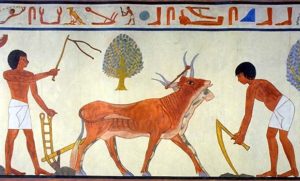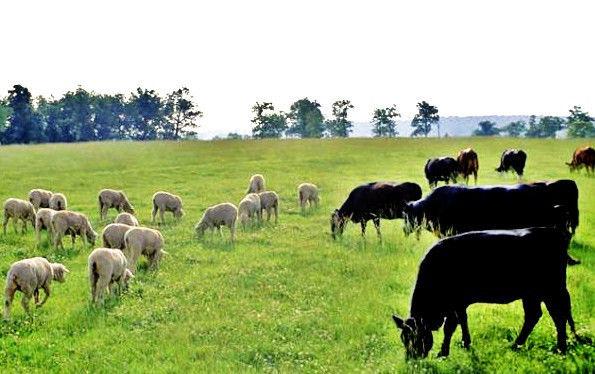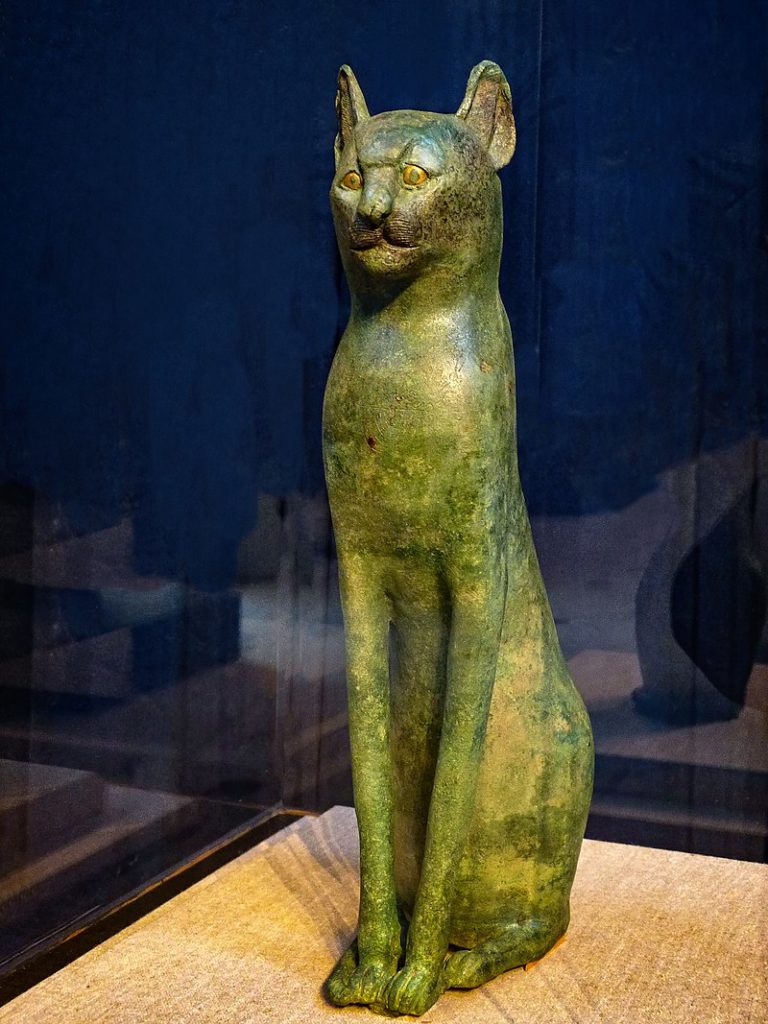Domestication is the process of selective breeding for human use. The domestication of animals began with the now-lovable dog by at least around 14000 BCE and possibly thousands of years earlier. As it so often happens with much of prehistory, the archeological record is simply unclear as to the exact time and location of the dogs domestication. It may have happened as early as 40000 BCE and it also may have happened several times independently. What is clear is that the domestication of the dog did happen, followed by the goat, pig, sheep, cattle, cat, chicken, horse, and a few other important and well known animals.
The domestication of animals, along with the domestication of plants, played a key role in the agricultural revolution and in the beginnings of civilization. Aside from the dog, animal domestication happened slightly later than plant domestication since enormous quantities of plant food was needed to feed the animals. Domesticated animals provided humans with several benefits of enormous value and was essential on humanity’s path towards urban civilization.

(Credit: Winnifred Neeler, Royal Ontario Museum)
An Increase in Food Production

(Credit: www.agupdate.com)
Prior to the domestication of animals all food provided by animals had to be obtained from hunting. This changed after domestication. Each of the domesticated animals could be used for their meat in times of food scarcity or after an unsuccessful hunt. However providing a source of meat was not their only addition to food production. In addition to meat, cattle, sheep, and goats provided a steady supply of milk and other dairy products. Once farming became widespread draft animals such as cattle, ox, and water buffalo provided an unprecedented addition of muscle power.
The increase in food production from first domesticated plants and then animals resulted in radical changes to the human condition. A sustainable and predictable source of food lead to a rapid increase in population density. People were able to disband their nomadic hunter and gather lifestyle and establish permanent settlements. The dawn of civilization was underway.
Additional Uses of Domesticated Animals

(Credit: Mary Harrsch, Wikimedia Commons)
In addition to the increase in food production, domesticated animals provided a variety of additional benefits to humans. Around 4000 BCE horses became domesticated allowing for significant improvements in transportation. A person riding a horse could travel double or more the distance and speed of what a person walking or running could travel in a day. The use of the horse was eventually applied to combat leading to superiority in warfare for those civilizations who were able to successfully utilize them.
There were also many other animals that provided significant benefits to human civilizations. Today most people revere cats for being cute and cuddly house companions. But in ancient Egypt cats were revered for their pest control qualities and for their ability to hunt venomous snakes, scorpions, and rodents. An unusually high volume of statues and paintings were dedicated to cats in this culture. Hides of a variety of animals were used for clothing, storage, or shelter. Sheep were prized for their wool that could be spun into clothing, rugs, and a variety of luxury goods.
A Rare Combination of Traits
Not all animals can be domesticated. Of the world’s roughly 150 large, wild, terrestrial, herbivorous mammals – the ideal candidates for animal domestication – only 14 have been domesticated. This indicates that there is a specific mix of traits an animal must possess in order to be successfully domesticated. These traits are:
- An efficient diet – Herbivores are much more efficient than carnivores. The conversion of food biomass into the consumer’s biomass is typically around 10 percent. This means if you want to raise 1,000 lb cow you have to grow 10,000 lbs of corn. Large carnivores would be extremely difficult and costly to domesticate because it would take 100,000 lbs of corn to make the 10,000 lbs of herbivore needed to feed the 1,000 lb carnivore. The food preference of the herbivores must also not be finicky.
- A quick growth rate – Some herbivore animals such as elephants take decades to reach their full adult size. Cattle on the other hand can reach 1,000 to 2,000 lbs by age three.
- A willingness to breed in captivity – Animals such as the cheetah refuse to breed in captivity. In the case of the cheetah it is due to a lengthy and elaborate courtship ritual that cannot take place in a cage.
- A friendly disposition towards humans – Large, vicious animals like the grizzly bear will instinctively maul humans making it suicidal to try to domesticate them
- A tendency to stay calm or not panic – Nervous species that have a tendency to fight or flight when they precede danger are difficult to domesticate.
- A manageable social and herding structure – Living in herds, having a well developed dominance hierarchy that have an overlapping home range is the ideal structure. This rules out solitary animals who are not instinctively submissive.
Continue reading more about the exciting history of science!
Growing up I had a pet cow! Wasn’t totally domesticated cuz she lived in the barn but I treated her like my own:) interested Facts about how pets came to be pets!!
I had no idea that the domestication of animals helps with traveling with your animal for warfare and such. How interesting!
This is a really interesting read, I had no idea how pets, became actual pets. It makes a lot of sense that they would domesticate the cattle, sheep, and goats so they would have dairy products. I would have never thought they would’ve domesticated the animals so long ago. I learned some new information from this post!
Very interesting article. I had no idea animal domestication started as early as 14000 BC!
I am a science freak and finding this website is PERFECT. A dose of science is always a great idea.
Interesting to know horses were domesticated around 40000BC. thanks for sharing
A good and intresting read about humanity and our early connection with animals.
good article. I had no idea that only 14 of our wild animals have been domesticated. No doubt that’s a good thing. Some animals are best left in the wild. Thank you for the information, I love learning new things
I have never really given to much thought about how the domestication of animals had an impact on everything else. Thank you for sharing!!
I love reading about history. Thanks for the window into humanities past,
I love how this blog post sheds light on the fascinating history of animal domestication and its pivotal role in the development of human civilization